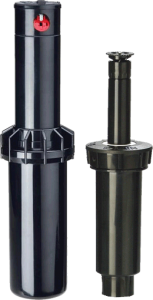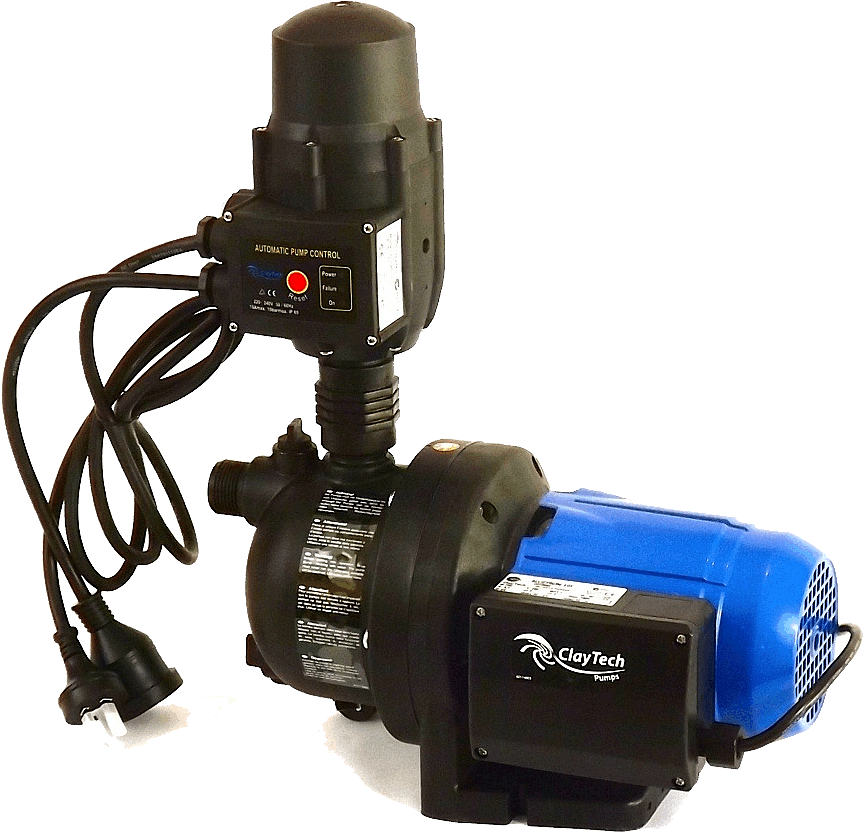Choosing a suitable garden pump for your Rainwater Tank can be a little more involved than most people tend to think at first. To help you make the best decision we have created this easy to follow guide.
Some basic questions that need to be answered are as follows:
1. How many garden taps will the tank/pump be connected to?
The first thing to consider when deciding on a Garden Pump is to confirm exactly how many tap outlets the pump needs to supply. You also need to establish how far away from the pump each outlet is located.
These two factors give us a good starting point in establishing the pump to be selected.
2. Is the outlet of the tank (at bottom of tank) lower or higher than the area to be watered?
This is important to know as if the tank is lower than the area we wish to feed water to, we may require a pump with higher pressure. Always advise us if the tank is lower, higher or on the same level as the area the tap outlet is to be installed.
3. Will the tank/pump be feeding any sprinklers or irrigation system?
This is a very important factor in determining the garden pump to install.
If you intend to have the pump feed an existing or new irrigation system, we need to determine what the flow rate of the sprinklers / drippers are that have been installed, together with the total number of them and the approximate length and diameter of pipe for each irrigation zone.
Most sprinklers or drippers will have the flow rate printed on them, i.e – FL35 lpm ( Flow rate is 35 litres per minute )
 This will tell us the flow rate of each irrigation zone. The zone with the highest flow rate requirement will determine what garden pump is required.
This will tell us the flow rate of each irrigation zone. The zone with the highest flow rate requirement will determine what garden pump is required.
If a garden pump is installed with a flow rate lower than what the irrigation sprinklers demand, then you will find that they will not have the required spray area or may not have enough pressure to pop up at all.
It is vitally important to get a good approximation of the flow rate required by each irrigation zone for the system to work at its optimum level.
4. Do I wish to connect my rainwater tank to toilets/washing machine at a later stage?
Many people choose to install their water storage system in different stages. They may begin initially with just a rainwater tank, then add a pump to use in the garden, and later connect the tank to feed fixtures in their home.
It is important to know prior to purchasing a garden pump what future plans you may have for your system. As discussed above, we need to know if you may wish to connect to a future irrigation system, or also if you may want to supply rainwater to the home.
Once these questions are answered we can supply a pump not only for immediate uses, but a pump that can be upgraded with additional features, for future uses.
Some pumps can have automatic mains backup systems added to them at a later stage, while other garden pumps may only be used with a manual mains backup system.
The more information we have on immediate and future demands on the pump the more accurate we can be in supplying a suitable pump system.
5. How will you cover your rainwater pump?
Another consideration prior to ordering your pump is its location. Will it be on the slab next to the tank or on the ground?
Nearly all pumps today are automatic, and therefore have an electronic controller on them.
If left out in the open, these controllers can take on water over time eventually creating a short circuit on their circuit boards. It is generally not the pump engine that fails, but the electronics in the controller that has the problems over the long term.
To prevent this from happening, and to ensure the warranty of the manufacturer, it is important to ensure the pump is under cover from the elements. A pump cover with a base is a good investment, as it will ensure a long life for your rainwater pump.
The pump covers we provide are quite large and do take most pump systems available on the market. They also come with a good quality base which prevents water entering the bottom of the pump, and in addition helps keep pump noise to a minimum.
